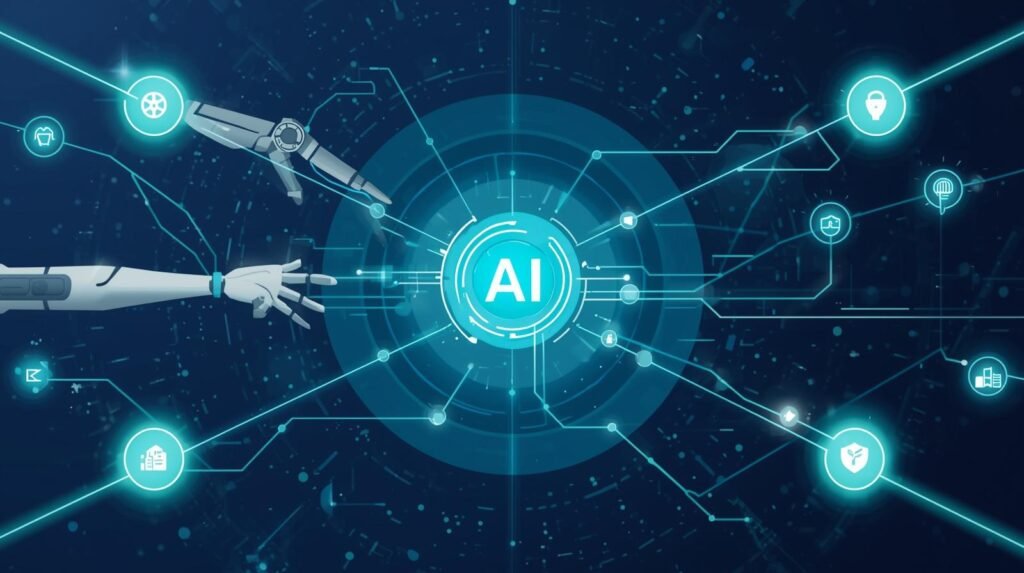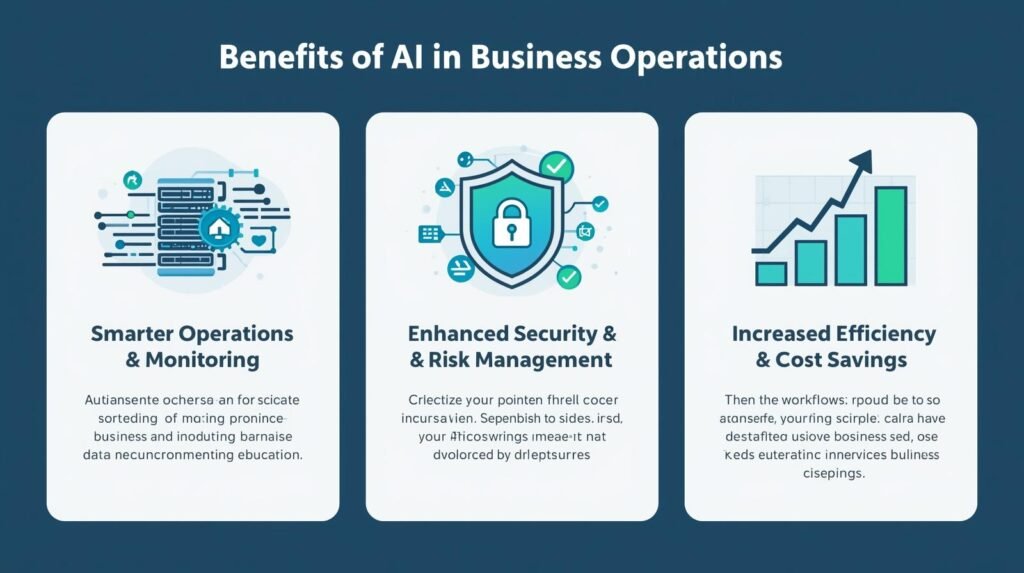Currently Empty: ₹0.00
AI and Automation Emergence in the IT Industry
AI and Automation Emergence in the IT Industry, The IT industry undergoes a radical change inspired by artificial intelligence (AI) and rapid progress in automation. These technologies bring revolution in all aspects of the region, from software development to cybersecurity, and create new opportunities for companies and transform the roles of IT professionals. In this blog, we find out how AI and automation affect the IT landscape, what benefits they provide, what challenges they face, and what the future of the industry is.
1. Development of AI and Automation in IT
AI and automation are not entirely new concepts. Initial repetitions of automation focused on simple tasks, such as job schedules and automating repetitive procedures. However, with the arrival of more sophisticated technologies such as machine learning, Natural Language Processing (NLP), and Robotic Process Automation (RPA), AI has begun to play a far more important role in IT operations.

In recent years, we have seen the development of intelligent systems that can diagnose and fix problems, AI-operated equipment that helps code writing, and advanced future analysis that may fail before system errors. These milestones indicate a new era in IT, where machines are not just equipment but active contributors in the decision-making process.
2. Large Areas Where AI and Automation Change IT
a. IT Operations and Network Management
The IT operations are ahead of AI and automation. For example, AI-operated self-healing systems can detect network problems or hardware failure and automatically resolve them without human intervention. Future maintenance tools use AI to analyze data from the sensor and predict when the equipment will fail.
b. Software Development and DevOps
In software development, AI and automation have become important partners for developers. Tools such as GitHub Copilot use machine learning to help developers write code more efficiently, while automatic test equipment ensures that the software is tested completely before release. In addition, AI CI/CD (continuous integration/continuous distribution) helps to streamline the pipeline, ensuring that the software updates are fast and distributed with a low error. AI is also used to detect the weaknesses of the code, which will help developers to cure problems faster than manual code assessments.
c. IT Support and Customer Service
In support of this, AI has changed the way companies join customers. AI-operated chatbots and virtual assistants can handle a wide selection of questions, provide 24/7 support, and automate regular tasks such as password reset and ticket control. This automation reduces the load on human agents, who can focus on more complex problems.
AI also plays an important role in the future by providing support before estimating the problems before analyzing the user’s behavior and system data to increase the customer experience.
d. Cybersecurity
AI brings a revolution in cybersecurity in the event of a rapid discovery of security breaches and enables feedback. With AI’s ability to analyze large amounts of data, it can identify unusual patterns and flag potential dangers in real time. AI-operated systems may be autonomously suitable for new threats, providing a level of agility and intelligence that traditional security systems may not match. The increase in autonomous security systems means that organizations can more effectively secure sensitive data and systems against quickly sophisticated cyberattacks.
3. Benefits of AI and Automation | AI and Automation Emergence
There have been many benefits to the increase in AI and automation, especially in terms of efficiency, cost reduction, and scalability. Automation allows companies to streamline procedures and handle repetitive tasks with greater speed and accuracy than human workers. This efficiency releases IT subjects to focus on more strategic functions, such as developing new techniques and new solutions for complex problems.

In addition, the AI-operated systems enable better decision-making. By analyzing large datasets, AI tools can identify trends, predict future results, and help companies inform, computer-supported decisions. These opportunities also contribute to cost cuts by adapting resource allocation and reducing the stoppage of the system.
AI and automation also provide scalability, so companies can increase the workload and handle requirements without the need for significant infrastructure. The ability to scale operations without a proportional increase in labor costs is one of the main benefits of these technologies.
4. Challenges and Moral Thoughts
While AI and automation provide many benefits, there are challenges that should be solved. A big question is the difference in skills. Asmake informed,As automation tools and AI systems become more complex, IT professionals must continue to be educatededucated to remain relevant in the industry. This requires companies to invest in training programs and certificates to equip their workforce with the necessary knowledge and expertise.
Another challenge lies in safety. While AI improves cybersecurity, it also introduces new risks such as AI-operated cyberattacks or weaknesses in the AI system. To ensure that AI systems are safe and a moving challenge against attacks is a moving challenge.
5. AI’s Future and Automation in IT
When we look forward, AI and automation will continue to operate innovation in the IT sector. We can expect to see even more autonomous IT operations, where the system can manage delivery, deployment, and security in the end. The emergence of better intelligence, where AI works with human experts to make decisions, will create new opportunities for collaboration and innovation.
However, with these advances, traditional IT jobs face a possible solution. While some roles will develop, others may be completely automated. IT subjects must receive new skills and focus on areas that AI cannot repeat, such as strategic thinking and creativity.
Conclusion:
AI and automation not only change the IT industry—they are fundamentally transforming the way businesses run. From self-healing systems to AI-operated growth equipment, these technologies are able to operate organizations more efficiently, securely, and innovatively. When we look at the future, IT professionals and companies should embrace these changes, invest in upskilling, and solve the ethical challenges that AI presents in order to fully capitalize on AI and automation’s potential.
1. What is the role of AI and automation in this?
Response:
AI and automation are revolutionized by managing duplicated tasks, improving efficiency, and enabling quick decisions. AI technologies such as machine learning, natural language processing, and robotic process automation (RPA) are used in various IT domains, such as network administration, software development, cybersecurity, and customer assistance. Automation handles regular procedures and releases IT subjects to focus on more strategic functions.
2. How do AI and automation improve IT operations?
Response:
AI and automation improve IT operations by streamlining network administration and reducing shutdowns. For example, the AI-operated self-healing system may detect and solve problems such as hardware failure or network disorder without human intervention. In addition, future maintenance tools analyze data to predict potential system errors before reducing shutdowns and increasing the reliability of the system.
3. What effect does AI have on software development?
Response:
AI plays an important role in improving software development by automating tasks such as code writing and error detection. Tools like GitHub Copilot use machine learning to help developers write more effective code. AI also enhances the software testing process and ensures that the code is fully tested before release. In addition, AI strengthens the continuous integration and continuous delivery (CI/CD) pipeline, which enables fast software updates with low errors.
4. Can AI help customer support hand over work?
Response:
Yes, AI is used for customer support through AI-operated chatbots and virtual assistants. These devices can provide 24/7 support, answer general questions, reset passwords, and even handle ticket management, thus reducing the workload of human support teams. AI can predict potential problems by analyzing customer behavior and data, providing proactive support before issues arise.
5. How does AI contribute to cybersecurity?
Response:
AI improves cybersecurity by enabling faster and more accurate threat detection. The AI system can analyze large amounts of data to identify unusual patterns, indicating cyberattacks or security violations. AI also helps to adapt to new and evolving threats, providing autonomous defense mechanisms that traditional security systems may not match. This level of agility improves an organization’s ability to protect sensitive data and respond to cyber dangers in real time.
6. What are the main benefits of AI and automation in the IT sector?
Response:
The main benefits include increased efficiency, cost reduction, scalability, and better decision-making. Automation handles repetitive tasks more quickly and accurately than humans, allowing IT professionals to focus on strategic initiatives. The AI-powered systems provide valuable insights by analyzing large data sets, helping companies make data-driven decisions. With automation, operations can scale without a proportional increase in labor costs, enabling companies to grow more effectively.
AI and Automation Emergence in the IT Industry https://jioskill.com/cloud-computing-explained-benefits-risks-and-real-world-use-cases/







